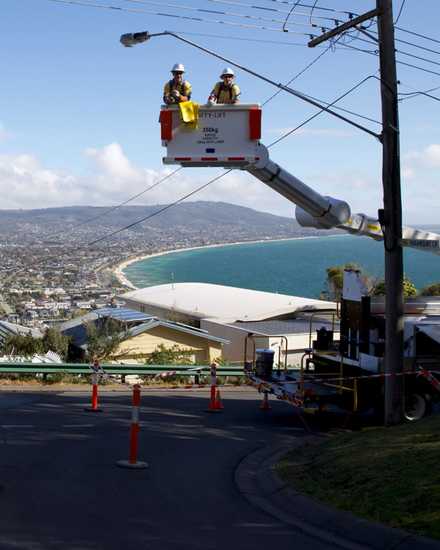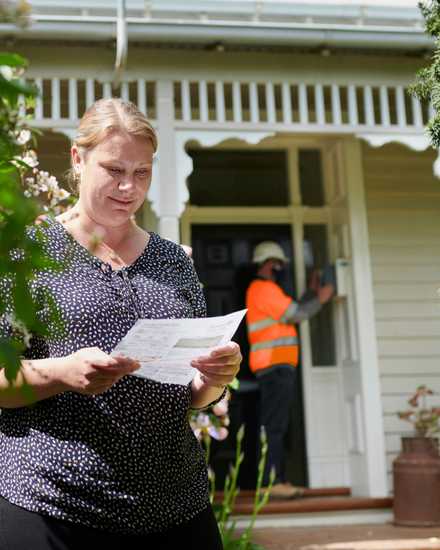Private overhead electric lines
Each year, we remind all POEL owners about their responsibilities, electrical safety and disconnection advice.
We inspect private electric lines every three years in high bushfire risk areas and every five years in low bushfire risk areas to make sure they are in serviceable condition. If we find a problem, you’ll be issued a defect notice on the POEL to ensure the fault is fixed by a specified date.
A registered electrical contractor is the only person who can carry out any work on a POEL. Similarly, if you need to trim vegetation around a POEL, we recommend engaging a qualified contractor.
Download our POEL brochure for more information.
Moving private lines underground
Your private line may need to be placed underground if:
- More than 20% of your line’s poles or wires need to be repaired or replaced.
- The line is in a Hazardous Bushfire Risk Area, as declared by the Country Fire Authority.
We inspect private electric lines every three years in high bushfire risk areas and every five years in low bushfire risk areas to make sure they are in a serviceable condition. If we find a problem, you’ll be issued a Private Line Inspection Report and a Defect Notification Letter on your POEL to ensure the fault is fixed by a specified date.
For POELs that are located in high bushfire risk areas, the installation of an underground service pit is free of charge for our customers.
To request a new point of supply, please submit a connections application using the online connections applications service. To request a new underground pit, please submit an Underground Electricity Supply Application using the online connection application service.
Vegetation clearances
Plants and trees are one of the leading causes of fires and faults around powerlines. If you have a POEL it’s also your responsibility to ensure any vegetation is outside the minimum distances required for safe clearance from the lines.
This includes tree clearing, treatment of stumps, and removal of all debris necessary along the proposed powerline route, including road reserves and property crossings. You’ll need to check the line annually to ensure clearances are maintained and arrange to trim or cut when necessary. For further information, call 1300 131 689.
Vegetation management
Permit conditions often apply to removing vegetation from private property. They also apply if native vegetation or trees need to be removed on road reserves or crown land to support your POEL.
In these cases, we recommend you contact your local shire or council and follow their permit and consent requirements. Your local government may also send your application to other responsible authorities such as the Victorian Department of Environment, Land, Water and Planning.
Once you have these permits, make sure qualified and insured contractors undertake any tree clearing on roadsides and public land. We always recommend working with professionals for the safe trimming and removal of trees.
If you’re thinking about revegetating any areas in or around the powerline easement, check out our guide to the species of plants that will grow safely near overhead lines and outside clearances.
Connecting your home

Manage your energy costs



